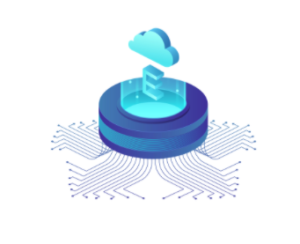
Neo4j Goes Enterprise-Grade with Graph DB for Cloud

Neo4j today unveiled Aura Enterprise, a new cloud-hosted version of its graph database that’s aimed at organizations with the biggest, most demanding graph requirements. Among the customers already running the new offering are Dun & Bradstreet, PwC Canada, and Boston Scientific.
Neo4j’s graph database has run in public clouds for years. However, it wasn’t until November 2019 that the company offered its database as a fully managed service running in the cloud. Neo4j Aura, as the offering was called, was aimed at helping organizations get up and running with a graph database quickly, and to explore the potential ways that they could use the database.
The company made a big step forward in the cloud domain with today’s launch of Neo4j Aura Enterprise, which builds upon the Neo4j Aura Professional offering. Specifically, the new enterprise offering supports bigger graph databases and is designed to meet the toughest demands for running graph applications in production environments.
Neo4j tells us that the Neo4j Aura Professional offering was primarily designed to meet the needs of startups and developers, whereas the enterprise offering is targeted at Global 2000 firms.
Neo4j Aura Enterprise can scale to graph databases that contain billions of nodes and relationships, according to Neo4j. With a limit of 256 GB of memory per database instance, it can hold much more data in memory than the professional version, which is limited to 64 GB. It also provides enhanced encryption capabilities, support for VPC isolation, and the ability to restrict access to the database based on user roles as well as specific nodes.
Neo4j is offering service level agreements (SLAs) that feature 99.95% uptime guarantee, as well as 24/7 support, which the company says are needed to attract the biggest, most demanding customers.
Graph databases are being adopted as a foundational technology for big data analytics and AI. Because of the manner in which graph databases store data–using nodes to represent a person, a place, or a thing, and vertices to define connections among two or more nodes—useful data patterns can be identified (and exploited) with relative ease.
In a report on graph technologies last month, Gartner analyst Jim Hare predicted that graph database tools running in the cloud could help customers scale their analytic projects.

Graph databases store data as a series of nodes and vertices that connect nodes (Image source: Neo4j)
“Analytics can be applied on basic graph structures that generally represent one type of entity or on top of knowledge graphs where multiple entities and relationships are represented,” Hare wrote. “Graph is also a critical enabler of natural language processing and data fabrics and can enrich and accelerate data preparation and artificial intelligence (AI) and machine learning (ML).”
Neo4j, which was among the first companies to commercialized graph database technology, says it’s gaining good traction with Aura. D&B, for instance, is using the cloud offering to fight financial crimes.
“We use Neo4j to support our identity insights business, including linked and matched data,” Matthew Voss, the company’s identity insights leader, stated in a press release. “Neo4j helps us to answer questions that span connected data in real-time, including Ultimate Beneficial Ownership (UBO) information.”
Boston Scientific, which has used Neo4j’s graph database to track and analyze the manufacture of medical devices, is also moving to the new enterprise offering in the cloud. “The schema flexibility and analytical capabilities of Neo4j allow us to see relationships between manufacturing batches that simply would not be possible with other tools,” Boston Scientific Data Scientist Eric Wespi states in the press release. “Deploying this project on Neo4j Aura Enterprise allows us to optimize our models and focus on quality control analytics, knowing that the management of our graph database is under control.”
Spotting financial fraud is one of the biggest use cases for graph databases, and Neo4j has plenty of those customers to talk about, including the International Consortium of Investigative Journalists (ICIJ), which has used Neo4j to uncover financial malfeasance on several occasions, including last fall’s FinCEN investigation. PwC is another organization tapping into the power of graph databases.
“With Aura, we are able to drive our fraud and anti-money laundering detection strategy, enabling our team to focus on rapid prototyping of connected data for each unique use case, as opposed to spending time on administrative tasks,” states Ivan Zasarsky, the financial crime practice leader at PwC Canada. “At PwC, we prioritize the unique needs of our clients, including the largest national and global banks. Aura lives up to the assurance, trust and security demanded by highly regulated sectors.”
Related Items:
ICIJ Turns to Big Data Tech to Unravel FinCEN Files
Neo4j Brings Graph Database and Data Science Together
Neo4j Going Distributed with Graph Database






























